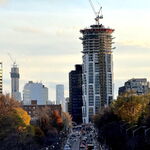Urban Sky
Senior Member
If you scroll one page further:Any idea what accounts for this drop?
Corridor: +7.8%
Canadian: -31.9%
Ocean: -1.9%
Regionals: -17.6%
Total: -1.9%
To name two factors: absence of Canada 150 passholders (which boosted Economy ridership on virtually every departure of the Canadian in July 2017 to four cars which were basically booked out end-to-end) and disastrous OTP on the Canadian and the Skeena, forcing a timetable change on the Canadian in the middle of the high season, which dramatically improved the OTP issue on VIA's flagship route, but uprooted many passenger's and tour operator's travel plans:
Train 2 (Vancouver-Winnipeg-Toronto):
Train 1 (Toronto-Winnipeg-Vancouver):
Note: Train 2 departing Vancouver on 2018-09-28 was terminated in Capreol, where consequently Train 1 scheduled to depart Toronto on 2018-10-02 originated from.
Source: VIA Rail website
Last edited:






